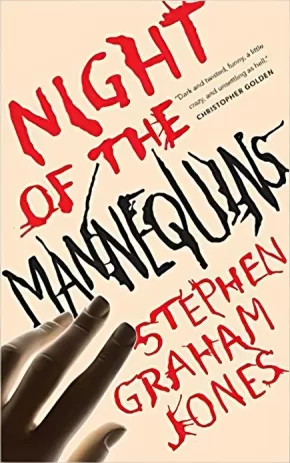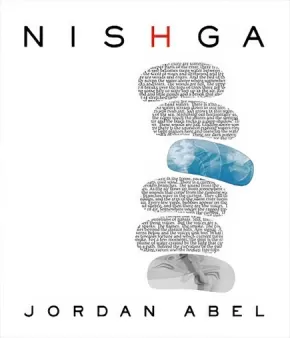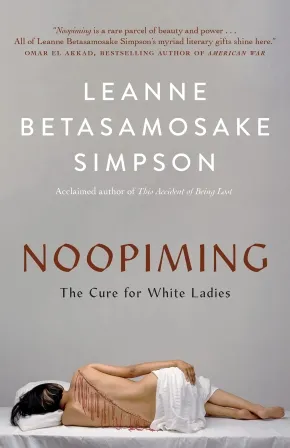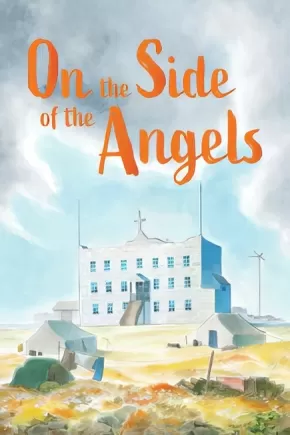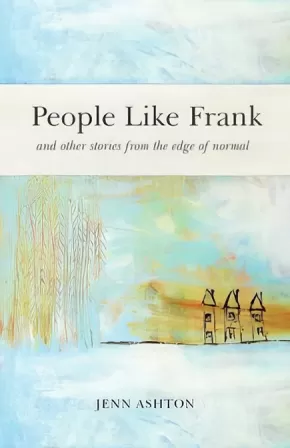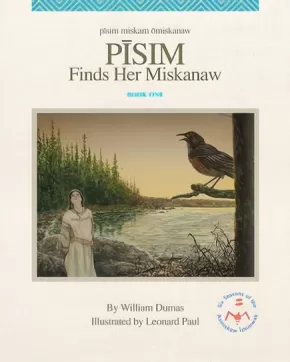
Teen Books
706
-
720
of
1617 Results;
Sort By
Go To
of 108
Moonshot: The Indigenous Comics Collection Volume 3
$23.95
Artists:
Editors:
Format:
Paperback
Text Content Territories:
Indigenous Canadian;
ISBN / Barcode: 9780228706229
Synopsis:
Synopsis:
MOONSHOT: The Indigenous Comics Collection brings together dozens of creators from North America to contribute comic book stories showcasing the rich heritage and identity of indigenous storytelling. From traditional stories to exciting new visions of the future, this collection presents some of the finest comic book and graphic novel work on the continent.
Educator & Series Information
Inhabit Education Books is proud to distribute this important collection of Indigenous comic stories, originally published by Alternate History Comics. Moonshot has been published under Avani, an imprint featuring titles that extend beyond the Canadian North, giving readers the opportunity to explore cultures and stories from all over Canada and around the world.
Ages 12+
This is volume 3 in the series.
Additional Information
144 pages | 6.50" x 10.25" | colour illustrations
More Powerful Together: Conversations with Climate Activists and Indigenous Land Defenders
$26.00
Format:
Paperback
Text Content Territories:
Indigenous;
ISBN / Barcode: 9781773632261
Synopsis:
Synopsis:
How can social movements help bring about large-scale systems change? This is the question Jen Gobby sets out to answer in More Powerful Together. As an activist, Gobby has been actively involved with climate justice, anti-pipeline, and Indigenous land defense movements in Canada for many years. As a researcher, she has sat down with folks from these movements and asked them to reflect on their experiences with movement building. Bringing their incredibly poignant insights into dialogue with scholarly and activist literature on transformation, Gobby weaves together a powerful story about how change happens.
In reflecting on what’s working and what’s not working in these movements, taking inventory of the obstacles hindering efforts, and imagining the strategies for building a powerful movement of movements, a common theme emerges: relationships are crucial to building movements strong enough to transform systems. Indigenous scholarship, ecological principles, and activist reflections all converge on the insight that the means and ends of radical transformation is in forging relationships of equality and reciprocity with each other and with the land.
It is through this, Gobby argues, that we become more powerful together.
100% of the royalties made from the sales of this book are being donated to Indigenous Climate Action.
Educator Information
Table of Contents
Acknowledgments
Thinking Together About Changing Everything
The Climate and Inequality Crises in Canada
Understanding the Crises
Envisioning Alternatives
How We Get From Here to There
Taking Stock of Where We Are At and What Stands in Our Way
Overcoming the Barriers and Building More Powerful Movements
“We Get There Together, or We Don’t Get There at All”
Appendix
References
Index
Additional Information
266 pages | 6.00" x 9.00"
Mother Earth Plants for Health & Beauty: Indigenous Plants, Traditions, and Recipes
$24.95
Format:
Paperback
Text Content Territories:
Indigenous Canadian; Métis;
ISBN / Barcode: 9781926696645
Synopsis:
Synopsis:
The recipes and traditions found in this book reflect the culture and the knowledge of the Medicine Wheel, featuring 26 edible and medicinal plants that you can gather in nature as Carrie and her grandmother did.
Create a luxurious and natural beauty regime by crafting your own lotions, soaps and teas from all-natural ingredients. From stress-busting teas and bath bombs to skin-smoothing lotions and creams, get vibrant skin and a healthy glow with Carrie’s creations based on her grandmother’s traditional teachings.
"I remember gathering plants and berries with my grandmother while she shared her stories and her deep understanding of traditional plants and their uses. My grandmother healed us with her medicinal plants—everything from pink eye, sore throats, stomach ailments, aches and pains, and infections. She’d make us these beautiful, healing teas." –Carrie
Additional Information
144 pages | 6.00" x 7.75"
Night of the Mannequins
$18.99
Format:
Paperback
Text Content Territories:
Indigenous American; Native American;
Reading Level: N/A
ISBN / Barcode: 9781250752079
Synopsis:
Synopsis:
Award-winning author Stephen Graham Jones returns with Night of the Mannequins, a contemporary horror story where a teen prank goes very wrong and all hell breaks loose: is there a supernatural cause, a psychopath on the loose, or both?
We thought we'd play a fun prank on her, and now most of us are dead.
One last laugh for the summer as it winds down. One last prank just to scare a friend. Bringing a mannequin into a theater is just some harmless fun, right? Until it wakes up. Until it starts killing.
Luckily, Sawyer has a plan. He’ll be a hero. He'll save everyone to the best of his ability. He'll do whatever he needs to so he can save the day. That's the thing about heroes—sometimes you have to become a monster first.
Reviews
"Suffused with questions about the nature of change and friendship, “Night of the Mannequins” is a fairy tale of impermanence showcasing Graham Jones’s signature style of smart, irreverent horror." —The New York Times
"Stephen Graham Jones’s range and his understanding of horror in fiction and film is staggering. In this novella he juggles—sometimes in very sly ways—slasher stories, coming of age horror, traditions of madness and unreliability, and Kaiju to create an amazingly speedy, voice-driven read that's tons of fun. Each new book of his gives his own take on a different facet of horror, and together they all add up to something really expansive and original." —Brian Evenson, author of Song for the Unraveling of the World
"Readers will delight more than once in the realization that they might be reading a different story from the one they thought was unfolding... trust Jones and enjoy the ride." —Shelf Awareness
Additional Information
144 pages | 5.00" x 8.00"
Niqiliurniq: A Cookbook from Igloolik
$24.95
Format:
Paperback
Text Content Territories:
Indigenous Canadian; Inuit;
ISBN / Barcode: 9781772272673
Synopsis:
Synopsis:
“Food is life. Food is the key to vitality, goodness, happiness, and a strong body and mind.”
Compiled by five women living in Igloolik, Nunavut, this collection of recipes brings together healthy traditional country foods—like seal, Arctic char, and caribou—with store-bought produce to create delicious meals that can be an alternative to pre-packaged foods. With details on food safety and storage, as well as information on how to build a healthy, nutritious diet, this book will help even novice cooks feel empowered to begin cooking from scratch at home.
With tasty recipes from land and sea—from Arctic char pizza to caribou chilli—this beautifully photographed cookbook provides wholesome, hearty meals that will become family favourites for years to come.
Additional Information
114 pages | 7.00" x 10.00" | colour photographs | Paperback
Nishga (HC) (1 in Stock)
$32.95
Format:
Hardcover
Text Content Territories:
Indigenous Canadian; First Nations; Nisga'a;
ISBN / Barcode: 9780771007903
Synopsis:
Synopsis:
From Griffin Poetry Prize winner Jordan Abel comes a groundbreaking and emotionally devastating autobiographical meditation on the complicated legacies that Canada's reservation school system has cast on his grandparents', his parents' and his own generation.
NISHGA is a deeply personal and autobiographical book that attempts to address the complications of contemporary Indigenous existence. As a Nisga'a writer, Jordan Abel often finds himself in a position where he is asked to explain his relationship to Nisga'a language, Nisga'a community, and Nisga'a cultural knowledge. However, as an intergenerational survivor of residential school--both of his grandparents attended the same residential school in Chilliwack, British Columbia--his relationship to his own Indigenous identity is complicated to say the least.
NISHGA explores those complications and is invested in understanding how the colonial violence originating at the Coqualeetza Indian Residential School impacted his grandparents' generation, then his father's generation, and ultimately his own. The project is rooted in a desire to illuminate the realities of intergenerational survivors of residential school, but sheds light on Indigenous experiences that may not seem to be immediately (or inherently) Indigenous.
Drawing on autobiography, a series of interconnected documents (including pieces of memoir, transcriptions of talks, and photography), NISHGA is a book about confronting difficult truths and it is about how both Indigenous and non-Indigenous peoples engage with a history of colonial violence that is quite often rendered invisible.
Reviews
“With NISHGA, Jordan Abel has reinvented the memoir, incorporating personal anecdotes, archival footage, legal documentation, photos and concrete poetry to create an unforgettable portrait of an Indigenous artist trying to find his place in a world that insists Indigeneity can only ever be the things that he is not. Abel deftly shows us the devastating impact this gate-keeping has had on those who, through no decisions of their own, have been ripped from our communities and forced to claw their way back home, or to a semblance of home, often unassisted. This is a brave, vulnerable, brilliant work that will change the face of nonfiction, as well as the conversations around what constitutes Indigenous identity. It's a work I will return to again and again.” —Alicia Elliott, author of A Mind Spread Out on the Ground
“In NISHGA, Jordan Abel puts to use the documentary impulse that has already established him as an artist of inimitable methodological flair. By way of a mixture of testimonial vignettes, recordings of academic talks, found text/art, and visual art/concrete poetry, Abel sculpts a narrative of dislocation and self-examination that pressurizes received notions of “Canada” and “history” and “art” and “literature” and “belonging” and “forgiveness.” Yes, it is a book of that magnitude, of that enormity and power. By its Afterword, NISHGA adds up to a work of personal and national reckoning that is by turns heartbreaking and scathing.” —Billy-Ray Belcourt, author of NDN Coping Mechanisms and A History of My Brief Body
"This is a heart-shattering read, and will also be a blanket for others looking for home. NISHGA is a work of absolute courage and vulnerability. I am in complete awe of the sorrow here and the bravery. Mahsi cho, Jordan.” —Richard Van Camp, author of Moccasin Square Gardens
“Jordan Abel digs deeply into the questions we should all be asking. Questions that need no explanation but ones that require us to crawl back into our bones, back into the marrow of our understanding. NISHGA is a ceremony where we need to be silent. Where we need to listen.” —Gregory Scofield, author of Witness, I Am
Additional Information
288 pages | 7.25" x 8.62"
Noopiming: The Cure for White Ladies
$22.99
Format:
Paperback
Text Content Territories:
Indigenous Canadian; First Nations; Anishinaabeg;
ISBN / Barcode: 9781487007645
Synopsis:
Synopsis:
Award-winning Nishnaabeg storyteller and writer Leanne Betasamosake Simpson returns with a bold reimagination of the novel, one that combines narrative and poetic fragments through a careful and fierce reclamation of Anishinaabe aesthetics.
Mashkawaji (they/them) lies frozen in the ice, remembering a long-ago time of hopeless connection and now finding freedom and solace in isolated suspension. They introduce us to the seven main characters: Akiwenzii, the old man who represents the narrator’s will; Ninaatig, the maple tree who represents their lungs; Mindimooyenh, the old woman who represents their conscience; Sabe, the giant who represents their marrow; Adik, the caribou who represents their nervous system; Asin, the human who represents their eyes and ears; and Lucy, the human who represents their brain. Each attempts to commune with the unnatural urban-settler world, a world of SpongeBob Band-Aids, Ziploc baggies, Fjällräven Kånken backpacks, and coffee mugs emblazoned with institutional logos. And each searches out the natural world, only to discover those pockets that still exist are owned, contained, counted, and consumed. Cut off from nature, the characters are cut off from their natural selves.
Noopiming is Anishinaabemowin for “in the bush,” and the title is a response to English Canadian settler and author Susanna Moodie’s 1852 memoir Roughing It in the Bush. To read Simpson’s work is an act of decolonization, degentrification, and willful resistance to the perpetuation and dissemination of centuries-old colonial myth-making. It is a lived experience. It is a breaking open of the self to a world alive with people, animals, ancestors, and spirits, who are all busy with the daily labours of healing — healing not only themselves, but their individual pieces of the network, of the web that connects them all together. Enter and be changed.
Reviews
"Noopiming is a rare parcel of beauty and power, at once a creator and destroyer of forms. All of Leanne Betasamosake Simpson’s myriad literary gifts shine here — her scalpel-sharp humour, her eye for the smallest human details, the prodigious scope of her imaginative and poetic generosity. The result is a book at once fierce, uproarious, heartbreaking, and, throughout and above all else, rooted in love.” — Omar El Akkad, bestselling author of American War
"Noopiming is a novel that is as philosophically generative as it is stylistically original. It begins with someone who is frozen in a lake, waiting, and from whom we learn that: ‘being frozen in the lake is another kind of life.’ Leanne Betasamosake Simpson’s expansive work explores the indivisibility of beings — old woman, old man, tree, caribou, stone, ice, spirit, geese, the brain, and more, all watching, grieving, thinking, acting, and listening amidst the ongoing and quotidian urgencies of capital. They are sleepless, ceaseless, trying to alter and to recode the world of consumerism, and their survival means that they must daily and collectively reconstruct existence in the city and its coterminous forests. Noopiming is far ahead of us in so many registers of story, language, and worldview; its cumulative effect is a new cosmography.” — Dionne Brand, award-winning author of Theory
"This imaginative book is what would happen if we gave pen and paper to the deepest, most secretive parts of ourselves. Down to the fibres, down to each breath, Leanne Betasamosake Simpson dares to not only explore the humanity of a character, but the humanity of the parts that make us whole, in a world running on empty.” — Catherine Hernandez, bestselling author of Scarborough
"Leanne Betasamosake Simpson’s Noopiming once again confirms her position as a brilliant, daring experimentalist and a beautiful, radical portraitist of contemporary NDN life. The prose hums with a lovingness that moved me to tears and with a humour that felt plucked right out of my rez adolescence. The chorus of thinkers, dreamers, revolutionaries, poets, and misfits that Simpson conjures here feels like a miracle. My heart ached and swelled for all of them. What I adored most about this book is that it has so little to do with the white gaze. Simpson writes for us, for NDNs, those made to make other kinds of beauty, to build other kinds of beautiful lives, where no one is looking. Noopiming is a book from the future! Simpson is our much-needed historian of the future!” — Billy-Ray Belcourt, award-winning author of This Wound is a World and NDN Coping Mechanisms
"How is it that Leanne Betasamosake Simpson’s fiction can feel both familiar and warm like old teachings and absolutely fresh and brand new? Is it even fiction? Noopiming seems to exist somewhere in the in-between, with all the best parts of poetry and story. As always, I am in awe of Leanne Betasamosake Simpson, prolific in every way.” — Katherena Vermette, bestselling author of The Break
Additional Information
368 pages | 5.50" x 8.50"
Northwest Resistance
$21.95
Artists:
Format:
Paperback
Text Content Territories:
Indigenous Canadian; Métis;
ISBN / Barcode: 9781553798316
Synopsis:
Synopsis:
Echo Desjardins is adjusting to her new home, finding friends, and learning about Métis history. She just can’t stop slipping back and forth in time. One ordinary afternoon in class, Echo finds herself transported to the banks of the Red River in the summer of 1869. All is not well in the territory as Canadian surveyors have arrived to change the face of territory, and Métis families, who have lived there for generations, are losing access to their land. As the Resistance takes hold, Echo fears for her friends and the future of her people in the Red River Valley.
Educator & Series Information
This is volume 3 in the graphic novel series, A Girl Called Echo, by Katherena Vermette.
Books in this series include:
Volume 1: Pemmican Wars
Volume 2: Red River Resistance
Volume 3: Northwest Resistance
Volume 4: Road Allowance Era
Recommended for grades 5 to 9 by publisher.
Katherena Vermette, a Governor General's Award-winning author deftly enters a format typically dominated by male creators with this graphic novel series, A Girl Called Echo. Featuring compelling illustrations, a female main character, and the contemporary foster care system, the series follows Echo Desjardins as she discovers her Métis heritage firsthand while slipping back and forth through time.
This book is available in French: Elle s'appelle Echo Tome 3: La résistance du Nord-Ouest
Additional Information
48 pages | 6.50" x 10.00"
On the Side of the Angels
$12.95
Artists:
● Hwei Lim
Format:
Paperback
Text Content Territories:
Indigenous Canadian; Inuit;
ISBN / Barcode: 9781774502037
Synopsis:
Synopsis:
"Then one day a ‘flyable’ took me away from our world through the sky to a dark and desolate place.”
Jose Kusugak had a typical Arctic childhood, growing up playing games, enjoying food caught by hunters, and watching his mother preparing skins. But he was one of the first generation of Inuit children who were taken from their homes and communities and sent to live in residential schools. In this moving and candid memoir, Jose tells of his experiences at residential school and the lifelong effects it had on him.
Educator & Series Information
Recommended for ages 12 to 15.
Included in the Canadian Indigenous Books for Schools 2020/2021 resource list for grades 6 to 9 for Social Studies, Science, and English Language Arts.
A personal, real story that introduces young readers to the memoir genre.
Inhabit Education Books is proud to introduce Qinuisaarniq (“resiliency”), a program created to educate Nunavummiut about the history and impacts of residential schools, policies of assimilation, and other colonial acts that affected the Canadian Arctic.
Each resource in the program has been carefully written and reviewed to include level-appropriate opportunities for students to learn about colonial acts and policies that affected Inuit. Topics covered include the residential school system, relocations to settlements and the High Arctic, sled dog slaughters, the use of E and W numbers, and others. These acts and policies created long-lasting impacts on Inuit individuals and communities, which are still being felt today.
The resources in this program include personal interviews, testimony, and writing; non-fiction informational resources; and information about traditional Inuit practices.
Additional Information
56 pages | 9.00" x 6.00". | b&w illustrations
One Earth: People of Color Protecting Our Planet
$24.95
Format:
Paperback
Text Content Territories:
Indigenous;
ISBN / Barcode: 9781459818866
Synopsis:
Synopsis:
One Earth profiles Black, Indigenous and People of Color who live and work as environmental defenders. Through their individual stories, the book shows that the intersection of environment and ethnicity is an asset to achieving environmental goals. The twenty short biographies introduce readers to diverse activists from all around the world, who are of all ages and ethnicities. From saving ancient trees on the West Coast of Canada, to protecting the Irrawaddy dolphins of India, to uncovering racial inequalities in the food system in the United States, these environmental heroes are celebrated by author and biologist Anuradha Rao, who outlines how they went from being kids who cared about the environment to community leaders in their field. One Earth is full of environmental role models waiting to be found.
Reviews
“Thought-provoking reading for young people figuring out their own contributions. This valuable compilation shows that Earth’s salvation lies in the diversity of its people.”— Kirkus Reviews, starred review
“Rao shines a light on the too often unacknowledged role played by People of Colour in the green movement. This is a book to be celebrated and shared!”— Elizabeth May, former leader of the Green Party of Canada
“One Earth is so important today because it acknowledges the diversity of our environmental defenders and warriors and reminds us that the environment has no borders. Thank you, Anu, for identifying these amazing eco-champions. Their experience and dedication to making sure the environment is our number one priority is an invaluable gift to Canada and the world.”— Winnie Ming Yue Hwo, Senior Public Engagement Specialist, David Suzuki Foundation
Educator Information
Recommended for ages 12+
Contains 20 short biographies of Black, Indigenous and People of Color (BIPOC) in the environmental movement.
Offers a positive approach to environmental issues with a focus on environmental successes.
Written in a readable and accessible voice, One Earth presents diverse role models for youth and readers of all ages.
Keywords / Subjects / Themes: Black, Indigenous, and People of Color (BIPOC), environmentalists, changemakers, conversation, diversity, biographies, #ownvoices.
Text Content Territory Note: This book has received the Indigenous text content territory label because it contains some profiles of Indigenous environmental defenders, but not all people profiled in this work are Indigenous.
Additional Information
208 pages | 6.00" x 8.50"
Pathways of Reconciliation: Indigenous and Settler Approaches to Implementing the TRC's Calls to Action
$27.95
Editors:
Format:
Paperback
Text Content Territories:
Indigenous Canadian;
ISBN / Barcode: 9780887558542
Synopsis:
Synopsis:
Since the Truth and Reconciliation Commission released its Calls to Action in June 2015, governments, churches, non-profit, professional and community organizations, corporations, schools and universities, clubs and individuals have asked: “How can I/we participate in reconciliation?”
Recognizing that reconciliation is not only an ultimate goal, but a decolonizing process of journeying in ways that embody everyday acts of resistance, resurgence, and solidarity, coupled with renewed commitments to justice, dialogue, and relationship-building, Pathways of Reconciliation helps readers find their way forward.
The essays in Pathways of Reconciliation address the themes of reframing, learning and healing, researching, and living. They engage with different approaches to reconciliation (within a variety of reconciliation frameworks, either explicit or implicit) and illustrate the complexities of the reconciliation process itself. They canvass multiple and varied pathways of reconciliation, from Indigenous and non-Indigenous perspectives, reflecting a diversity of approaches to the mandate given to all Canadians by the TRC with its Calls to Action.
Together the authors — academics, practitioners, students and ordinary citizens — demonstrate the importance of trying and learning from new and creative approaches to thinking about and practicing reconciliation and reflect on what they have learned from their attempts (both successful and less successful) in the process.
Reviews
“Alerts Canadians to what must be done if we are to seriously embrace the goal of decolonizing relations with Indigenous peoples." – Peter Russell, Professor Emeritus, Department of Political Science, University of Toronto
Educator & Series Information
Table of Contents
Introduction
Ch. 1—Paved with Comfortable Intentions: Moving Beyond Liberal Multiculturalism and Civil Rights Frames on the Road to Transformative Reconciliation
Ch. 2—Perceptions on Truth and Reconciliation: Lessons from Gacaca in Post-Genocide Rwanda
Ch. 3—Monitoring That Reconciles: Reflecting on the TRC’s Call for a National Council for Reconciliation
Ch. 4—A Move to Distract: Mobilizing Truth and Reconciliation in Settler Colonial States
Ch. 5—Teaching Truth Before Reconciliation
Ch. 6—“The Honour of Righting a Wrong:” Circles for Reconciliation
Ch. 7—What Does Reconciliation Mean to Newcomers Post-TRC?
Ch. 8—Healing from Residential School Experiences: Support Workers and Elders on Healing and the Role of Mental Health Professionals
Ch. 9—Learning and reconciliation for the collaborative governance of forestland in northwestern Ontario, Canada
Ch. 10—Bending to the Prevailing Wind: How Apology Repetition Helps Speakers and Hearers Walk Together
Ch. 11—How do I reconcile Child and Family Services’ practice of cultural genocide with my own practice as a CFS social worker?
Ch. 12—Repatriation, Reconciliation, and Refiguring Relationships. A Case study of the return of children’s artwork from the Alberni Indian Residential School to Survivors and their families
Other contributors to this work include: Peter Bush, Tracey Carr, Brian Chartier, Mary Anne Clarke, Ko’ona Cochrane, Aimée Craft, Raymond F. Currie, Rachel (Yacaa?ał) George, Erica Jurgens, Régine Uwibereyeho King, Sheryl Lightfoot, David B. MacDonald, Benjamin Maiangwa, Cody O’Neil, Paulette Regan, Cathy Rocke, John Sinclair, Andrea Walsh, Melanie Zurba
This book is part of the Perceptions on Truth and Reconciliation series.
Additional Information
336 pages | 6.00" x 9.00"
People Like Frank: And Other Stories from the Edge of Normal
$19.95
ISBN / Barcode: 9781777010164
Synopsis:
Synopsis:
On the edge of normal, challenges take many forms — the everday can be an adventure and the ordinary a triumph.
A young woman in a group home investigates a mysterious piece of knitting. An obsessed bag boy does grim battle with a squirrel. A woman, an asparagus bag and a garbageman have a tumultuous short-term relationship. Otherwise unremarkable achievements become epic on the edge of normal.
This uplifting collection explores the world through the eyes of protagonists whose perspectives are informed by their unique circumstances. Some are struggling with physical challenges while others seek to overcome psychological barriers. Far from being defined by their limitations, these characters revel in achievements others take for granted and find wonder in unexpected places. By celebrating the private triumphs of people who are all too often dismissed, Ashton reminds us all of our own humanity.
Additional Information
200 pages | 5.50" x 8.00"
Pisim Finds Her Miskanaw: Revised
$29.00
Artists:
Format:
Hardcover
Text Content Territories:
Indigenous Canadian; First Nations; Cree (Nehiyawak); Woodland Cree; Rocky Cree;
ISBN / Barcode: 9781553799092
Synopsis:
Synopsis:
NOW REVISED! This edition features updated Rocky Cree translations and an expanded glossary, augmented with new maps to give a more detailed look at Pīsim’s journey. These enhancements make this book a great tool for teachers and a great addition to any library.
Out of an important archaeological discovery came this unique story about a week in the life of Pīsim, a young Cree woman, who lived in the mid 1600s. In the story, created by renowned storyteller William Dumas, Pīsim begins to recognize her miskanaw – the path for her life – and to develop her gifts for fulfilling that path. The story is brought to life by the rich imagery of Mi’kmaw artist Leonard Paul, and is accompanied by sidebars on Cree language and culture, archaeology and history, maps, songs, and more.
Reviews
"In imagining the life of a young Cree woman, this volume provides a wonderful evocation of the wisdom and language of Cree elders that seamlessly incorporates archaeology, ethnology, and oral traditions." — Stephen Loring, Arctic Studies Center, Smithsonian Institute, Washington DC
"This rich story ... brings alive the history and language of Asiniskow Ithiniwak in Manitowapow while illustrating the cultural breadth of a dynamic community. This book is a joy to read, teach, and share with my daughter." — Niigaanwewidam James Sinclair, Assistant Professor, Dept. of Native Studies University of Manitoba
"The brilliant teamwork between archaeologists, the Cree, and an accomplished storyteller gives us... a beautifully written and illustrated journey into a centuries-old world... the books promises to be a classic of Canadian history." — Brian Fagan, Emeritus Professor of Anthropology, University of California, Santa Barbara, and author of The First North Americans
Educator & Series Information
Pīsim Finds Her Miskanaw is book one in The Six Seasons of the Asiniskow Īthiniwak series about the Asiniskow Īthiniwak (Rocky Cree) of Northern Manitoba. Corresponding to the six seasons of sīkwan (spring), nīpin (summer), takwakin (fall), mikiskow (freeze-up), pipon (winter), and mithoskamin (break-up), the books explore the language, culture, knowledge, territory, and history of the 17th century Rocky Cree people through story and images. The groundbreaking series centres Indigenous ways of knowing and includes insights from a wide range of disciplines – cross-cultural education, history, archaeology, anthropology, linguistics, literature, oral culture and storytelling, experiential and community-based learning, and art.
Recommended for ages 9 to 12.
Reading Level: Lexile® Framework for Reading: 940L
Contains some Cree language.
Additional Information
60 pages | 10.00" x 12.00" | Revised | Hardcover
Postcolonial Love Poem
$21.00
Format:
Paperback
Text Content Territories:
Indigenous American; Native American; Mojave;
ISBN / Barcode: 9781644450147
Synopsis:
Synopsis:
Postcolonial Love Poem is an anthem of desire against erasure. Natalie Diaz’s brilliant second collection demands that every body carried in its pages—bodies of language, land, rivers, suffering brothers, enemies, and lovers—be touched and held as beloveds. Through these poems, the wounds inflicted by America onto an indigenous people are allowed to bloom pleasure and tenderness: “Let me call my anxiety, desire, then. / Let me call it, a garden.” In this new lyrical landscape, the bodies of indigenous, Latinx, black, and brown women are simultaneously the body politic and the body ecstatic. In claiming this autonomy of desire, language is pushed to its dark edges, the astonishing dunefields and forests where pleasure and love are both grief and joy, violence and sensuality.
Diaz defies the conditions from which she writes, a nation whose creation predicated the diminishment and ultimate erasure of bodies like hers and the people she loves: “I am doing my best to not become a museum / of myself. I am doing my best to breathe in and out. // I am begging: Let me be lonely but not invisible.” Postcolonial Love Poem unravels notions of American goodness and creates something more powerful than hope—in it, a future is built, future being a matrix of the choices we make now, and in these poems, Diaz chooses love.
Additional Information
80 pages | 6.00" x 9.00"
Powwow: A Celebration through Song and Dance (HC) (5 in Stock)
$24.95
Format:
Hardcover
Text Content Territories:
Indigenous American; Indigenous Canadian;
ISBN / Barcode: 9781459812345
Synopsis:
Synopsis:
Feel the power of the powwow dance.
Powwow is a celebration of Indigenous song and dance. It’s a journey through the history of powwow culture in North America, from its origins in colonization, the Indian Act and the Wild West shows of the late 1800s to the thriving powwow culture of today. As a lifelong competitive powwow dancer, Karen Pheasant-Neganigwane is a guide to the protocols, regalia, songs, dances and even food you can find at powwows from coast to coast, as well as the important role they play in Indigenous culture and reconciliation.
Educator & Series Information
Recommended for ages 9 to 12.
Beginning with a historical look at the origins of the powwow and then moving on to what they look like today, this book is a practical guide to the songs, dances, regalia, culture, and food associated with different powwows across North America.
This book explores how powwow culture, and an understanding of its importance in Indigenous culture, can be a part of the narrative of reconciliation.
The author is a longtime competitive powwow dancer who has travelled to powwows across North America.
This book is part of the Orca Origins series that explores cultural celebrations throughout the world.
Keywords: powwow dance, Indigenous culture, reconciliation, history, ceremonial dance.
Recommended in the Canadian Indigenous Books for Schools 2020/2021 resource list for grades 4 to 8 for English Language Arts, Social Studies, and Dance.
Additional Information
88 pages | 7.50" x 9.00" | colour illustrations / photographs
Sort By
Go To
of 108






